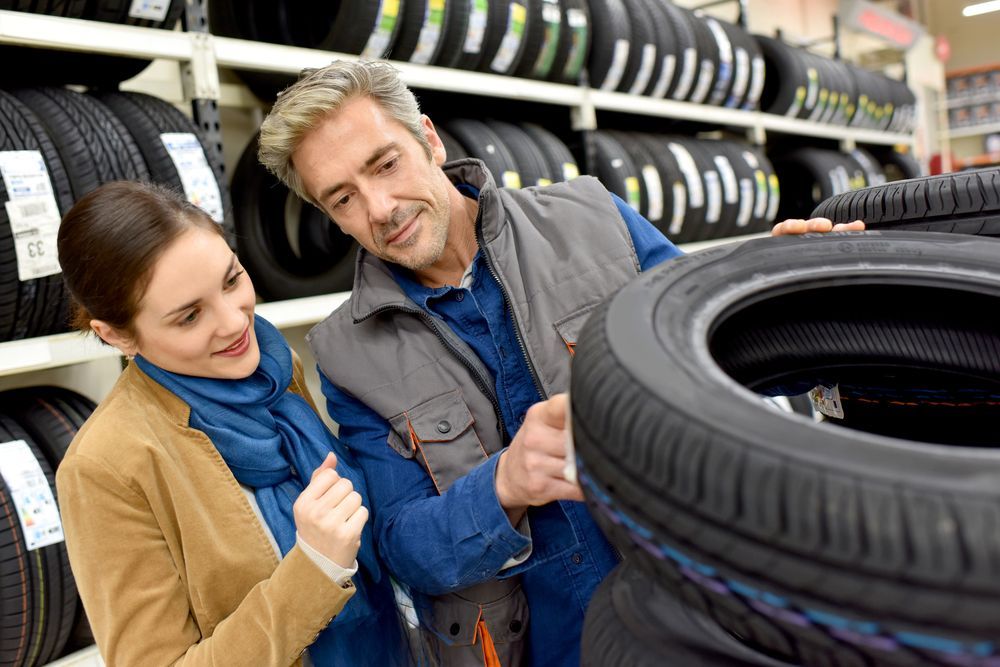
Maintaining the health of your vehicle's tires is the best way to ensure a smooth, comfortable ride. Worn and overloaded tires can be dangerous and costly. How can a driver determine when it is time to replace a vehicle's tires? Run a simple test. Getting started The easiest way to learn if it is time for a change is the Quarter Test. This examination displays the depth of tire tread. Insert a quarter, head down, between the grooves. If the top of George Washington's head is visible, this is a good indication the tread is too worn and new tires are needed. Types of tires With the test complete and new tires needed, it is time to decide on a type. Many different things factor into this decision -- type of vehicle, driving style, the season and the condition of the roads. There are three common categories of tires generally able to meet most drivers' needs. All-season tires are a bit of a misnomer. These tires are best during warm weather, offering good traction and handling, all in an affordable package. They are found on the widest range of vehicles. Winter tires perform best when the weather conditions turn bad: they can handle snow, ice, wet pavement or cold dry pavement with ease. Performance tires offer maximum handling on dry pavement in warmer weather, thanks to a design that keeps more of the rubber on the road. They are more expensive than the other types of tires and they wear out quicker. Features After deciding on a tire type, a driver's next step is to learn the code that is printed on the side of every tire. Start with Size, a set of numbers and letters that usually begin with a P for passenger vehicles, LT for light truck or T for temporary spare. The letters are followed by numbers designating section width (in millimeters) and aspect ratio (section width divided by sidewall height). The letter near the end designates the construction method. It is followed by the tire's diameter in inches. The DOT compliance code is important for its last four letters; they tell a buyer the week and the year the tire was built. Drivers should avoid buying tires that are over two years old; the rubber may have lost some elasticity and therefore be subject to cracking. The Uniform Tire Quality Guide Standard, located near the brand name, tells the tire's wear and traction rating. An A for both Traction and Temperature, with a high number for the Treadwear rating, are best. The Service Description is a number-letter combo located near the Size listing. It describes the load rating of the tires, while the letter indicates the speed rating. Most new cars are S-rated (112 mph) or Z-rated (149 mph-plus). Brands Before choosing a tire from one of the major brands, a driver should know what type of tire the vehicle needs. Continental, Michelin, Hankook and Goodyear make all-season tires that rate well with Consumer Reports magazine. Winter tires from Michelin and General rate the highest with Consumer Reports reviewers. Performance-tire buyers should look for top-rated Pirelli, Cooper and Sumitomo models. Tire maintenance The job isn't over once the new tires are installed. A driver should regularly check the tire pressure to make sure tires are not overinflated or under inflated. Overinflated tires can cause a bumpy ride, which can reduce traction and damage the car. Under-inflated tires can lead to premature wear and overheating (due to friction between the tire and the road). An overheated tire is a serious risk for a blowout. When a driver checks the tire pressure, it should be done before operating the vehicle and with a digital or digital-type gauge (forget about the little hand-held devices). Information on the proper pressure level can be found in the owners' manual, inside the door, inside the glove compartment or under the center console cover. Warning signs Drivers can stay ahead of trouble through regular tire inspection. Common signs of aging are cracks in the sidewalls, which can eventually lead to separation of the tread's steel belting. Keeping an eye out for wear will keep a driver safe and possibly prevent expensive repair bills in the future. Nitrogen in tires Filling tires with pure nitrogen has a couple of benefits. Nitrogen won't leak as much as air, so proper pressure can be maintained longer. Nitrogen will help keep water out of the tire well, avoiding corrosion. These benefits can help drivers save some money on fuel and maintenance costs in the long run. But drivers won't see big improvements in traction or in feel any greater smoothness during the ride. Run-Flat Tires Run-flat tires are built to keep their shape after being damaged and run up to 50 miles after impact. However, they haven't made much of an impact with consumers, due to their bulkiness and their high cost. They are not as durable as standard tires and they cannot be as easily repaired. Still, they can be seen as a convenience for drivers, who can avoid dangerous or awkward situations and wait to find a safe place to replace a damaged tire. That may be their most appealing feature.
Read next


Mattress Buying Guide

